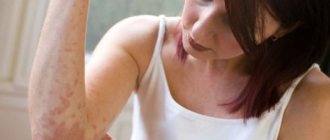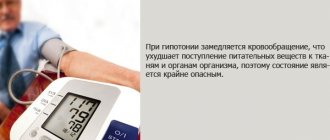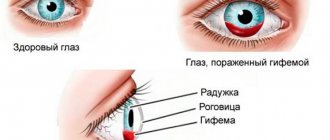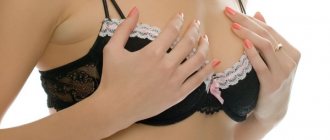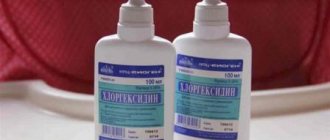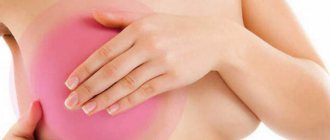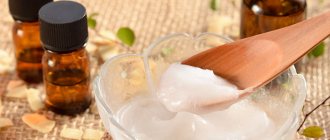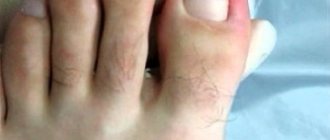Treatment for fungus depends on what type it is. Dermatologists and trichologists claim that diseases are caused by two types of fungi: pathogenic and conditionally pathogenic. Conditionally pathogenic microorganisms always live on the surface of human skin, but they can cause harm to the nail plate or epidermis only at moments when the “host’s” immunity is weakened. In this case, the development of mycosis can be provoked by a disease in the acute phase or a chronic disease (for example, diabetes, psoriasis), in which the immune system is always “at its limit.” The fungus usually affects nails, skin and hair. The most common nail fungus is onychomycosis.
Figure 1 - The first signs of fungus are discoloration and deformation of the nail plate.
How can you become infected with a fungus?
Onychomycosis is an infectious disease. The pathogen enters the body from the external environment. Let's figure out what causes nail fungus; the causes of this disease are different.
The source of infection can be:
- A sick man. Some types of fungi are parasitic only on humans, so you can only get infected from a patient. You can become infected with toenail fungus either through direct contact with a patient or through the use of shared objects - shoes, towels, etc.
- Animals. There are types of fungi that affect both people and animals. People usually become infected through contact with sick pets.
- Wednesday. Another type of fungus can reproduce outside living organisms. You can become infected through contact with soil or water.
Thus, you can get infected anywhere. But, of course, not every contact with a pathogen ends with the development of fungus on the toenails. The following provoking factors can lead to the development of onychomycosis:
- age after 60 years;
- diabetes;
- circulatory disorders in the lower extremities;
- weakened immunity caused by chronic disease or other factors;
- wearing uncomfortable, non-breathable shoes.
How does nail fungus start? The initial stage of toenail fungus does not cause physical discomfort; changes affect the appearance of the nail plate. Nail fungus at the initial stage is manifested by the appearance of spots or stripes of an unnatural color. If toenail fungus is not treated at the initial stage, the disease will begin to progress.
Signs of onychomycosis
Most often, the fungus infects the big toes.
The following changes in the nail plate indicate a fungal infection:
- dullness, yellowing, loss of smoothness and shine;
- itching, redness, peeling of the skin around;
- delamination, fragility, friability;
- unpleasant odor;
- violation of the structure, thickening;
If you find yourself with at least one of the listed signs, you should immediately consult a doctor who treats nail fungus. This could be a podologist, dermatologist or mycologist.
A mandatory examination by a podiatrist to check for onychomycosis is required after an injury to the nail or the skin around it. If there are predisposing factors (varicose veins, diabetes, atherosclerosis, weakened immunity, excessive sweating of the feet, etc.), it is recommended to have a medical pedicure once a month, during which the doctor will carefully examine the nails and skin of the feet and identify changes in the early stages.
Stages of fungus
All fungi are prone to aggressive colonization of their host. The growth of mycelium into tissue is similar to the growth of tree roots in a building. By branching, the body of the fungus destroys the cellular structure of tissues, causing destruction.
It's all about their way of absorbing food. The mycelium secretes enzymes that destroy dead keratinocytes, cells of the nail plate, and absorb nutrients. Unfortunately, these enzymes affect not only dead cells, but also disrupt the functioning of healthy ones.
The progression of the disease occurs in five stages:
- Infection. The fungus attaches to dead skin flakes, gradually creeping up to the nail. No symptoms are observed.
- Normotrophic. The nail becomes dull and yellow at the edges, and thickens slightly at the corners. There is an odor and discomfort.
- Hypertrophic. Yellowness covers the entire nail, deformation of the nail plate occurs with the appearance of transverse striations. In 60% of cases it is accompanied by thickening of the entire nail. The edge of the nail plate loosens and exfoliates.
- Atrophic. Pieces of the nail plate fall off, exposing the nail bed, covered with loose horny masses. Nails are dull, yellowish or gray in color.
- Onycholysis. The nail plate becomes thinner and falls off. If the matrix is not affected, the nail will grow back.
The good news for us is that mycelium does not penetrate living tissue. Dead cells are enough for it, and when it gets into the nail bed, the fungus is immediately attacked by the immune system and dies. However, with prolonged infection, a violation of the trophism of the nail leads to a weakening of the barrier function, and pieces of the mycelium can go into the bloodstream in search of a new fertile place. In addition, the constant fight against the fungus depletes the immune system.
Laser nail removal
Laser removal is the most commonly used method in the treatment of advanced nail fungus. The advantages of the procedure include its painlessness and the ability to eliminate the source of infection at any depth.
The advantages of this method are also:
|
Contraindications to laser nail removal are the presence of decompensated diabetes mellitus, malignant tumors, inflammatory processes and viral infections in the body. The procedure cannot be performed during pregnancy.
The day before laser removal, you should steam your legs. After a bath with soda and laundry soap, you should file and trim the surface of the nail as much as possible .
During laser nail removal, a feeling of warmth is felt in the area affected by the fungus. To completely cure an advanced form, about 10 procedures will be required.
Diagnostics
To confirm the diagnosis, the specialist gives the patient a referral for tests:
- Microscopy. The scraping taken from the nail plate is treated by a laboratory technician with a special substance to destroy keratin. In this form, the material is easier to examine under a microscope. The disadvantage of microscopic examination is the inability to determine the type of fungus. However, the analysis answers already serve as a basis for prescribing broad-spectrum antimycotics.
- Cultural research. In laboratory conditions, the material is placed in a Sabouraud nutrient medium - sowing for rapid development of the fungus. The pathogen is identified by the color, growth rate and shape of the parasite colonies. The technique also reveals the sensitivity of strains to medications. But the patient receives the results of the analysis only 3 to 5 days after it is performed.
- DNA diagnostics. Detection of DNA cells of a fungal infection occurs when examining a scraping of a nail affected by dermatophytes or candidal fungi. The method does not determine mold strains. The results of the analysis are given to the patient within 1 – 2 days. The disadvantage of DNA diagnostics of onychomycosis of the feet is the high cost due to the need to use special equipment.
The external symptoms of fungus are not specific; they only indicate damage to the toenails. The cause of the disease becomes clear only after diagnostic studies. To prescribe adequate therapy, onychomycosis of the feet is differentiated from lichen planus, nail psoriasis, keratoderma and other diseases that cause malnutrition of the nails.
Typical clinical picture
Clinical manifestations of fungal nail infections include:
- a burning sensation and itching of the skin near the affected area;
- nail fragility;
- swelling of the affected area;
- active detachment of the plate;
- color changes (black, yellow, gray, green, brown tint indicates a pathological process);
- painful sensation in the place where the fungus is localized;
- nail deformation.
If treatment is ignored or inappropriate therapy is observed, keratinization of the plate and an increase in compaction are observed.
How to treat fungus at home
You should not hope that the fungus will go away on its own. The longer a person suffers from this disease, the more difficult further treatment will be.
The duration of treatment and selection of medications depends on:
- Stages of the disease.
- Degree of nail damage.
- Clinical form of the disease.
Before starting active actions, you need to minimize the negative influence of the external environment, eliminate the reasons why the fungus appeared under the toenails:
- A warm and humid environment is ideal for the growth of various microorganisms, try to dry your shoes all the time after walking, wear socks only from natural materials that ensure normal heat and air exchange;
- Foot fungus often appears due to poor immunity. You can simply step on the floor with your bare foot and get an infection. To avoid this, take vitamins;
- Frequent nail extensions can be one of the causes of onychomycosis; limit the procedure to 1 session every six months;
- The most difficult to remove is a fungus caused by active spores. They penetrate into the hollows between the nails and fingers, may remain dormant for some time, and then grow sharply. Most often they become infected in public places (swimming pools, showers, solariums), when using someone else's shoes, etc.
The initial stages of nail fungus require the use of local medications, which can be in the form of:
- Solutions (Clotrimazole, Exoderil).
- Ointment for fungus (Triderm, Oxiconazole, Ketoconazole).
- Kremov (Ekodax, Atifin, Thermikon).
- Varnishes (Batrafen, Mikozan, Cyclopiroxolamine).
It is advisable to apply preparations for external use after keratolytic treatment of the nail plate.
Before each procedure of using the medication you must:
- Make a soap and soda bath. Add a tablespoon of soda and salt and 50 g of laundry soap to a small bath. Keep your feet in the solution for about 15 minutes.
- Treat damaged nail. Using a special file, the top layer of the nail is filed away so that the drug is better absorbed.
- Apply medication. The drug is applied to dry, clean toenails and the skin around them.
When using solutions, ointments and creams, the drug is applied 2-3 times a day, varnishes - 2 times a week. The course of treatment is determined by the doctor depending on the existing injuries.
If the nail plates are completely affected and local drugs do not have a positive effect, it is recommended to combine them with systemic antimycotics.
These include:
- Lamisil.
- Onyhon.
- Terbizil.
- Diflucan.
- Flucostat.
- Nizoral.
Systemic drugs have a large list of contraindications and must be prescribed by the attending physician. Most of them are prohibited to take during pregnancy and lactation, in childhood and for chronic liver and kidney diseases.
Severe cases of subungual fungus may require removal of the nail plate. The procedure can be performed either surgically or with the help of keratolytics, which contain salicylic acid and urea.
The most famous of them include:
- Onychoplast.
- Mikospor.
- Ureaplast.
Removing the affected nail with keratolytic plasters is painless and convenient. After steaming the feet, the patch is carefully applied to the affected nail plate and sealed with adhesive tape. After a few days, the patch is removed, the affected areas of the plate are cut off, and one of the antifungal drugs is applied. The procedure is performed several times.
Antifungal tablets
If the disease is already advanced or develops very rapidly, the affected area is extensive, then systemic antimycotics cannot be avoided. There are a huge number of tablets for nail fungus and they should be selected by an experienced doctor. These drugs have contraindications; they cannot be taken by children, people with liver or kidney pathologies, and there is also pharmacological incompatibility with some other drugs, such as hormonal contraceptives. The most popular oral drugs for fungus:
- Fluconazole price 20-40 rub. (analogues: Diflucan 450-479 rub.; Mikosist 300-600 rub.; Flucostat 170-250 rub.; Forkan; Mikomax)
- Ketoconazole - Nizoral 450-500 rub., Fungavis 140 rub.
- Itraconazole - Orungal 2500-2600 rub. (its analogues are Rumikoz 700 rub., Kanditral 500-600 rub., Itrazol 400-700 rub., Irunin for fungus 300-500 rub.)
- Terbinafine - Lamisil 1700 -2000 rub. (analogs: Onychon, Terbinafine 350-400 rub. Fungoterbin, Terbizil 1100-1200 rub., Exifin 640-680 rub.)
Feedback on results after treatment
- Lyudmila, 46 years old. For a long time I didn’t know how to cure foot fungus. I tried many folk recipes: compresses with iodine, applied novocaine, made lotions with garlic tincture. I realized that external remedies were not suitable for me, and decided to splurge on the expensive Orungamin. A miracle happened already on the 2nd day - the nail began to lighten, and a week later the fungus was gone.
- Boris, 34 years old. My onychomycosis was so advanced that the nail plate peeled off. The doctor suggested removing it, but I was afraid of a radical procedure and decided to treat the nail myself. I bought regular Clotrimazole ointment at the pharmacy, took salt baths between applications, and the problem gradually began to go away. After 3 months, the nail was completely renewed.
- Valentina Ivanovna, 69 years old. After an unsuccessful pedicure at a beauty salon, my toenail began to turn yellow and break. I realized from a photo on the Internet that I had caught a fungus. There, based on reviews online, I found an effective (as later confirmed) Terbinafine ointment. I applied it 2 and even 3 times a day for a whole month. My nail slowly healed on its own and didn’t even peel off.
Types of drugs
Treatment of a fungus in an advanced form should be comprehensive . After examination and carrying out the necessary tests, the doctor prescribes the following types of medications:
|
Fungus prevention
One of the most effective means that the fungus is “afraid” of is high-quality prevention.
- It is very important to maintain the normal function of the immune system, which requires a proper diet (minimum alcohol and coffee, maximum vegetables, proteins) and physical activity. In a weakened body, the infection spreads very quickly.
- You should know and strictly follow the rules of personal hygiene. Those who do this dramatically reduce the likelihood of infection. There is no need to explain why you should not wear someone else’s shoes or use personal hygiene products.
- You should also not walk barefoot in swimming pools, saunas, baths, or on the beach.
- You need to dry your feet after a shower.
- It is important to know how to disinfect areas where fungus could theoretically be present. In the absence of special anti-fungal agents, ordinary whiteness can be used for this.
Remember that the manifestation of nail fungus is always much easier to prevent than to get rid of this unpleasant disease later.
How to soften toenails at home? Ringworm in humans Pityriasis versicolor Esophageal candidiasis Solar lichen Feline lichen in humans
Types of nail plate removal
Removal of the affected nail plate is carried out if drug treatment does not bring results . This procedure is necessary to provide the opportunity for the growth of a new healthy nail.
The standard method of removing the affected nail plate is surgery using anesthesia to avoid pain. During the process, either the entire nail or only the part susceptible to fungus can be removed.
If you want to remove the nail without unnecessary discomfort, you can opt for a hardware pedicure . This method is carried out under sterile conditions in a medical facility. It consists of layer-by-layer removal of the affected nail using various attachments and cutters of the device. The procedure is performed absolutely painlessly with preliminary softening of the nail plate with special solutions. After removing the affected areas, ointment and a bandage are applied to the treated area and secured with a bandage.
The nail plate can also be removed chemically - a keratolytic patch and is not removed for 2-3 days. During this time, the stratum corneum of the nail plate dissolves.
Keratolytic patch for fungus
For a small area of fungal infection, a home removal method . You will first need to steam the nail and, if necessary, use special varnishes to soften its surface. Then , using pedicure accessories, the affected part of the nail is removed. The method is not suitable for complete removal of the nail plate.
Disadvantages of nail removal
Often, after removing the nail plate, undesirable consequences occur:
|
If the nail becomes ingrown and the wound becomes infected, you should seek medical help.
